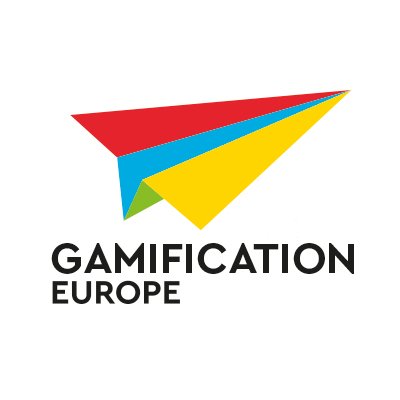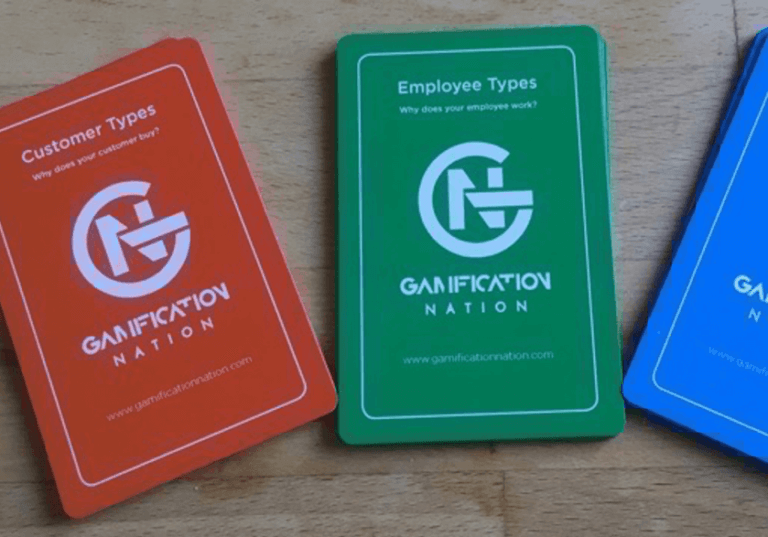Over the last few days, I spoke and attended Gamification Europe in Amsterdam. In comparison to last year, the event was no longer two streams fighting for attention, this time we could all stick together and listen to everyone. I personally found the quality a little higher this year also, but maybe that is because I could see everything I wanted to see.
Day 1
The event kicked off with Marigo Raftopoulos reporting back on revisiting the people she originally included in her PhD research a few years later and how their enthusiasm had decreased significantly. Some of them felt gamification had failed, others felt too much hype had been sold as in overpromise and underdeliver, others again didn’t see gamification as the whole or only solutions and further professionalism had been lacking. I really liked the constructive feedback, which can only make us better in the long run.
For me, the top takeaways from her talk were the suggested actions for us as industry professionals to step up our game and really become more realistic in what we put out there, less hype more case study and research. To explain with honesty what gamification can and can’t achieve. Where possible to adopt an end-to-end solution for clients through partnerships or others, so that it is easier for clients to buy.
With Marigo as a good friend, we often talk about the gamification industry and how it is going generally. We both had a sense that whilst the interest, in general, is waning and for some people, it really hasn’t delivered, passing the hype cycle need not be a bad thing. I think it gives us scope to sell real solutions and to have mature conversations about what it gamification can and can’t do. Stepping it up a level as professionals, I think has been long overdue and some of us adopted this approach from the start and others are still learning to find their feet.
I was a speaker in the next block together with Zac Fitz-Walter and Melinda Jacobs. We had a fun time backstage getting ready for our talks, trying on some of the stage props. Zac kicked off our trio of speeches with prototyping and without seeling his full presentation nor coordinating presentations, it really was a great starter of the topic. Great advice to start with paper prototypes and then graduate to digital ones if you need a digital solution. My playtesting talk had similar advice on start with paper and then I took a deep dive into how to go about it, what you need for a solid playtest and what things to test for.
You can find the slides for my session here:
Melinda Jacobs then followed on with great wisdom about user experience and how to apply it well in gamification. We saw some examples of it done well and then tips to get it right.
After lunch on day 1, we started with a panel discussion hosted by Rob Alvarez with Juliette Denny, Will Stuart-Jones and Mun Choong Lam, who are all platform providers and their view on the industry in Europe. What I took away from it is that the industry is still doing well, the wording remains an issue but when providing value it really is about solving business problems and speaking the customers language.
Karen Sikkema followed with a talk about bringing physical games and narrative together for a game they did around history for the cities of Utrecht and Amsterdam. She also shared their learning model, but we didn’t really receive an insight into the detail of it. I understood white papers will follow. Manuel Pimenta then explaine the approach they took to create a thriving community for Worten and how co-creation was a large part of the engagement strategy.
Later in the afternoon Willem-Jan Rengers shared how templating makes it easier for teachers and people in organisation to replicate designs rather than creating from scratch each and every time. Bernardo Letayf from BlueRabbit shared his journey from teacher and player to gamification industry professional and his quest for continuous improvement. Then Michiel Van Eunen MC for the coference also had a chance to share his wisdom around experience design and how having come from a theatrical background helps them break through some boundaries when they create serious games and playful solutions.
Day one left us with many talking points and great interactive discussions at breaks. It was fabulous to see how although we work in different companies, they general approaches are quite similar, the journeys of individuals and their projects is always fun to hear and inspires us to reflect on how to do things.
The day finished with the Awards dinner and I will dedicate a blog on Friday to this purpose and my experience as a judge.
Day 2
Day 2 started off with Steve Bocska from PugPharm and his vast experience in creating blockbuster video games and how he evolved with building a gamification platform. He took us through his dislike that we probably all share about points, badges and leaderboard and how this achieves mainly short term engagement even if they can have a place in a game, they are not what drives long term engagement.
Having worked on proposals with Steve and his team, I know what he has achieved and I really like their platform, it has much more focus on quests, collectables and fun mini-games to build longer term more sustainable engagement. His engagement score formula is also a useful to take a further look at when the whitepaper comes out. I just wish he had shown a bit more about the work the platform can do maybe with a deep dive into a project. Either way it was great to finally meet Steve in person after all our time meeting on Google Hangouts.
Juliette Denny from Growth engineering gave us burst of positive energy around learning related gamification and how they effectively use gamification for their clients. The impressive examples and comparisons between what they do for L’Oreal and others and the differences in rolling it out for good business and cultural reasons I found truly refreshing. She also showed how the traditional mechanics of points, badges and leaderboard do work for some of their clients when it fits the profile.
Because I know both people and their paltforms relatively well it was fun to see the different approaches and how they can work for different purposes.
Next up was Andrzej Marczewski, who strayed from his usual inspirational and evangelising best practise approach to much more corporate practical on how to work within limitations and constraints such as time and money, which is reality for all of us. He took us through a case study and what was included even within the limitations of the project. Bart Hufen took us to the lunch break with his personal story and continuous improvement loop to keep making your work better.
The afternoon started with a panel on research and what I took away from it is that the world of research and the world of business should be more connected. I think true value exists in the crossover and how research can be applied for improvement of our solutions. In one of the discussions over breaks we also felt that if a useful repository of relevant research would be accessible to all of us in corporate that would probably help too. If someone has the time and willingness, I know a few us interested.
Samantha Clarke then spoke about mystery boxes and to instill curiosity in higher education and learning. The use of props and narratives were key to engagement. She was followed Pau Yanez Vilanova with his case study of PlayVisit where they used beaconing technology and gamification to encourage more exploration in tourism.
The final session included talks from Will Stuart-Jones, Mun Choong Lam and Dr Michael Wu. Judging from the Twitter feed they were again great hits and full of knowledge.
After the coffee break, I teamed up with Marigo and Melinda to do our debrief over some Jenever slurping. Our cup was well and truly full to the brim and we were fading fast, so fresh air and a bit of a boost was on our menu.
Reflections
I have to say I thoroughly enjoyed the two days and felt the quality of conversations and presentations was higher than the previous year. I enjoyed the networking conversation where I could connect with old friends and colleagues and many new ones. As a travelling speaker and business owner, some of the people in this community are now extended family and friends, which I personally find enriching on many levels.
One conversation saddened me a bit in one way, a lady who was looking to create gamification for a large network of women had approached many of the male speakers and when she asked how they saw differences in gamification for women and men, most of the time she received the answer that there wasn’t any or it was minimal. It saddens me that this thinking is still around. Gentlemen please speak to your lady friends, partners and colleagues and listen to hear how they perceive games, competition and business reality. You will be surprised to hear it is more than subtle or non-existent. For me it means that my message has not been heard and my work of sharing research and findings from reality is not sticking. So there is more work to be done.
From a pure business perspective, I felt the fact that we were willing to look at wasn’t working and how to remedy it. Sharing the good the bad and the ugly is a sign of an industry maturing and wondering what develops next. I thought it was seriously positive to see different perspectives and some great examples. Let’s hope we can all take our lessons and build out what we have. I am sure over the coming days, when we all let it sink in, there will be interesting thoughts and maybe projects or collaborations to build on from this event.
Thank you to the organisers for pulling the event together and thank you to all the people I spoke to at various breaks, it is these seamingly small things that really make a difference in what we experience. For me it was lovely to meet old friends, solidify some relationship and make new ones.





